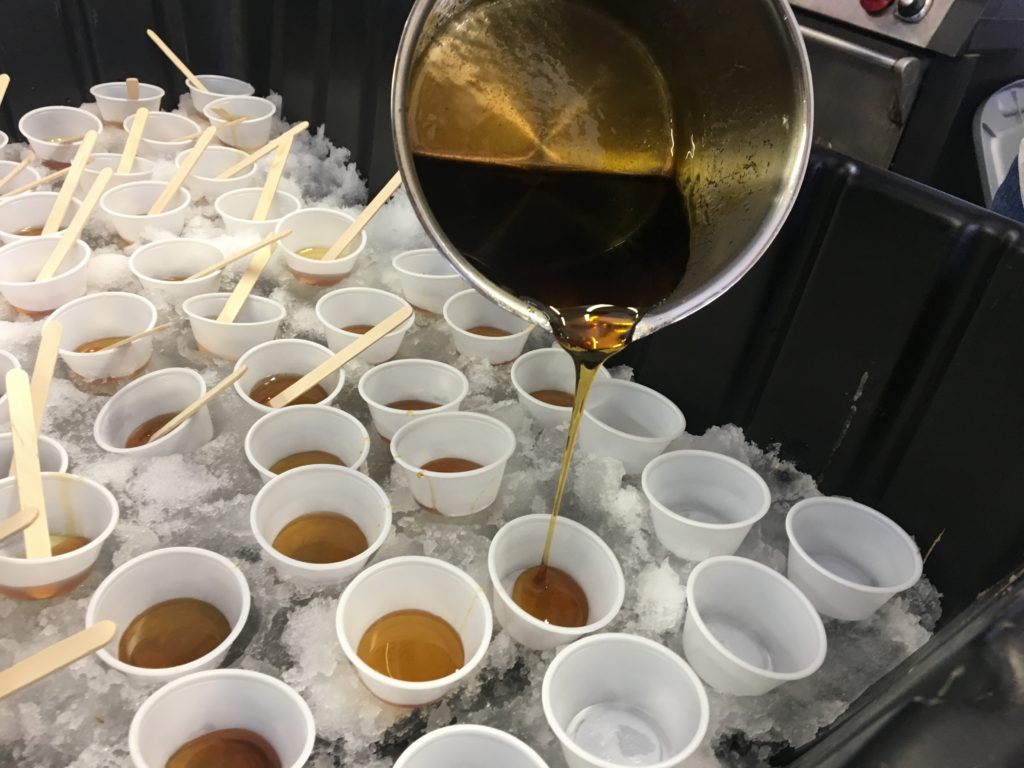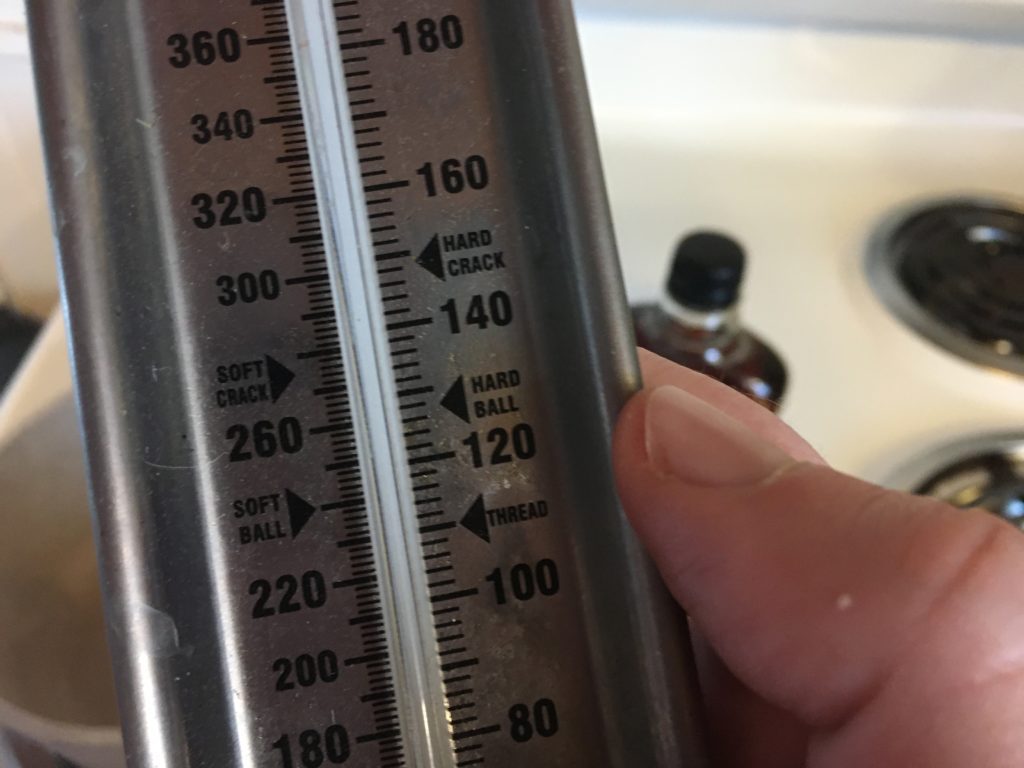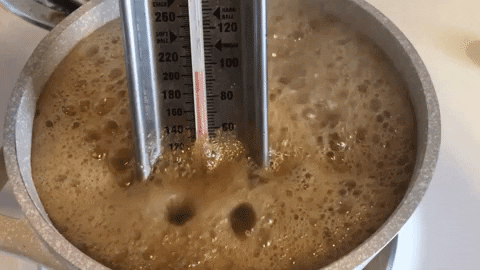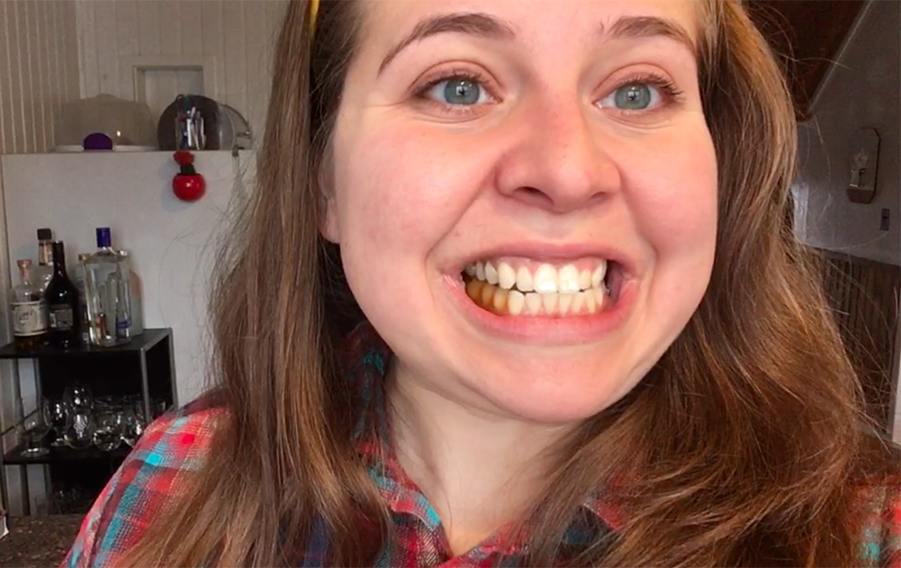I tried to make maple syrup snow candy. Here’s how it went.
As a writer for the “Homestead” section of the Bangor Daily News, I am almost ashamed to admit that I did not take to the “Little House” series as a kid. Laura Ingalls Wilder’s problematic literary treatment of Native Americans aside, I much preferred fantasy worlds to real-world hardships.
My elementary school library only had so many books about friendly giants and steampunk fairies, though, and voracious reader that I was, I did finish the “Little House” series. I may not have enjoyed the accounts of churchgoing, blizzards and fever-induced blindness, but the homesteading treats and tricks sounded almost like fantasy from my suburban vantage point: crispy pork tail lollipops, inflated pig bladder balls, blackbird pie, pepper ring strings — and, of course, maple syrup snow candy.
In the book “Little House in the Big Woods,” the Ingalls family makes a trip to Wisconsin during maple sugaring season. Laura’s grandmother boils sap down and ladles it out onto plates of snow until it cools into a soft candy. Laura brags about being able to eat as much candy as she desired (another fantastical idea in my childhood) because maple sugar “never hurt anybody.”
Maple syrup snow candy, also known as maple taffy, maple toffee, sugar on snow and “tire d’érable” or “tire sur la neige” in French-speaking Canada, is made by boiling maple sap past the point where it would form maple syrup, but not so long that it becomes maple butter or sugar, cooling it quickly on fresh snow and lifting it with a popsicle stick or metal dinner fork for easy enjoyment.

Maple syrup snow candy is traditionally prepared in Québec, Eastern Ontario, New Brunswick and northern New England at sugar shacks (or “cabane à sucre”) during maple tapping season. The soft candy is sometimes served with donuts, sour dill pickles and coffee to counter its intense sweetness.
Now that I live in Maine, where maple syrup and snow are both plentiful, I decided to indulge my childhood wonder and make maple syrup snow candy for myself.
Learning to try
Preparing maple syrup snow candy in its simplest form just requires maple syrup and snow, but I wanted to find a way to offset the pure sweetness. I chose this recipe for maple syrup snow candy from My Recipes with ginger and sea salt, two tasty mix-ins I already had in my spice cabinet that I think would take the treat to the next level.

Believe it or not, candy-making is something of a science. As a sugar syrup — maple or otherwise — is boiled, the sugar concentration increases and the temperature rises, leading to different consistencies when it is cooled. Between 230 and 235 degrees Fahrenheit, the sugar is at the “thread stage,” an 80 percent concentration that forms a liquid thread or syrup; between 300 and 310 degrees Fahrenheit is the “hard-crack stage,” with a brittle, crystalline sugar concentration of nearly 99 percent.
In order to achieve the right consistency for maple syrup snow candy, the syrup should be boiled to about 235 and 245 degrees Fahrenheit — the “soft-ball stage,” where the molten liquid will form a soft, flexible ball when it hits cold water.
I gathered my materials: grade-A pure maple syrup (using the real deal is important: If you use “fake” syrup — which is really corn syrup in disguise — it will make a gooey, artificially-flavored mess); a box of Maldon sea salt flakes that I bought months ago on a whim after watching “Salt, Fat, Acid, Heat;” ground ginger; and popsicle sticks.
A trying experience
On the first snowy day of the season, I set a Pyrex baking dish outside in the snow. It didn’t take long to fill. I put the snow-filled tray in the freezer, so it would stay cool until the maple syrup was ready.
I poured a cup of maple syrup (yes, you read that correctly: basically an entire bottle — these were going to be sweet) and stirred in the powdered ginger. I had a candy thermometer on-hand because my boyfriend went through something of a Willy Wonka phase (I tease, but his sour mango suckers are transcendent, I swear). The thermometer even had a mark that indicates where the soft-ball stage would take place, which was extra handy.

The syrup went from still to frothing much faster than I anticipated. I rushed to pull the tray of snow from the freezer before the temperature passed the soft-ball stage. The icy baking dish slid all over the counter like it was possessed, so I had to set it on a dishtowel.
Now that the snow was out at room temperature, time was of the essence. I quickly poured the maple syrup from my saucepan pot onto the snow. I tried to make strips, but I apparently have a fairly heavy pour. I sprinkled the thick, amorphous blobs with flaky sea salt and attempted to roll them onto popsicle sticks. In the seconds since pouring, though, some of them had already solidified. The ones that hadn’t became fairly unwieldy lollipops.
The aesthetics meant very little if the candies were delicious, though, so I put them to the taste test. The flavor was incredible, but the texture felt wrong. The brittle crunch quickly converted to a taffy-like consistency in my mouth (and between all my teeth — I do not recommend this snack for anyone with fillings, braces or dental issues of any kind), but I think the syrup must have been a tad too hot when I poured it onto the snow.

Still, I enjoyed my “Little House in the Big Woods” treat, and could immediately feel myself thinking of ways to punch up the potential of this traditional snack. Could I coat the soft, hot syrup with roasted nuts and chocolate nibs if I timed it correctly? How about a spicy maple syrup snow candy with cayenne pepper and chili powder?
I stuck the snow back in the freezer to experiment with more maple syrup snow candy later on (once my teeth had recovered from the sugar shock, that is).
My tried-and-true takeaways
Precision is essential when it comes to making candy, and maple syrup snow candy is no exception — don’t let the folksy tradition of it fool you. In future iterations, I would keep better track of my timing and temperature. I also would have made one at a time and put the popsicle stick down before pouring the syrup over it. (In my opinion, having such a utensil is essential for enjoying the tacky treat, but if you don’t mind sticky fingers, you could skip it altogether).
In general, though, the process is fairly easy, and making maple syrup snow candy is a fun way to spend a snowy day, Laura Ingalls Wilder-style.
